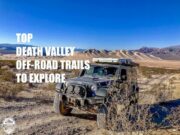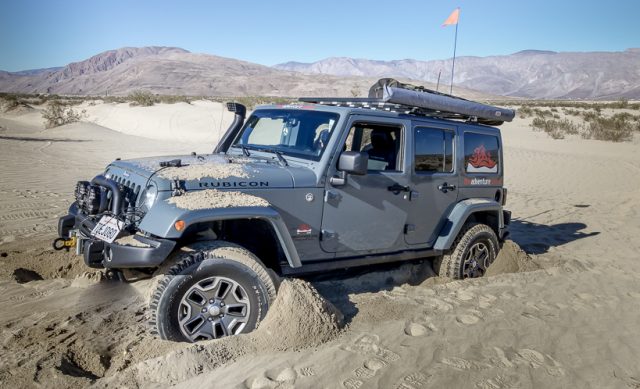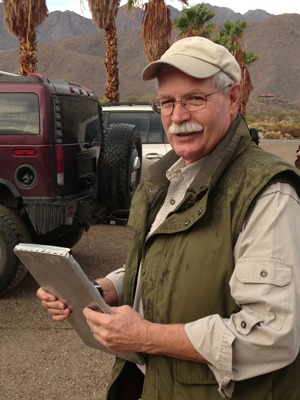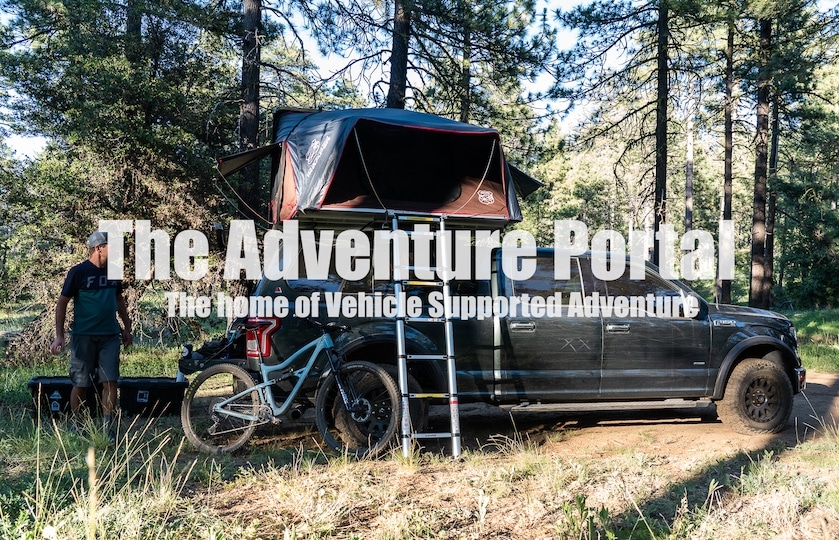Driving off road presents a host of challenges and fears for any driver. Four wheeling can be especially intimidating for new drivers. Those initial concerns are understandable. It takes off-road experience to build skill set and confidence.
If you’ve considered going off road but are reluctant to do so, relax. The following information may convince you to take up the hobby. While you are reading this remember: in town, you get into a pile-up as the result of other driver’s errors and actions. Off-road, in almost every instance, the driver makes the decision and judgment that lead to his own predicament.
After years of talking with new 4-wheel drive owners, here is my perception of the Top 10 Fears of newer drivers, and what to do about them.
1. Damage to a new vehicle:
This fear is mostly with regard to cosmetic damage; minor pin-striping and scraped bumpers. On occasion an air dam gets torn off or a license plate is bent out of shape. If you intend to explore more challenging terrain, I recommend you add rock sliders on the sides of the vehicle and skid plates to protect the undercarriage in case you bottom out. The first little dents will probably hurt you more than the vehicle. But on the bright side, you can now justify an aftermarket bumper.
2. Rolling over:
This is normally a rare issue. What makes good YouTube fodder is the extreme stuff with above average risk. When it does occur, the driver is often in an extreme situation or driving recklessly. Take your time going through rough terrain and around obstacles. Avoid high risk situations whenever possible. This may not be a comfort to you, but if you do make a mistake that causes your vehicle to roll, most times, the vehicle will only tip over onto a side (what we call a flop). A flop tends to occur while driving slowly, so damage to the vehicle and the driver is limited.
3. Stuck forever:
This rarely happens. Sure you are going to get stuck sometimes. Your buddies will help you out of a jam. Most stuck situations are what we call shallowly stuck – lightly hung up on a rock or mud just up to the side walls. A quick pull by another vehicle will usually remedy this situation. If you go by yourself, a winch will get you out of most situations. Of course you should avoid dangerous situations; areas where you think, “Yeah, I might be able to do that.” Bottom line? It’s always preferable to go out with at least one other vehicle.

4. Breakdowns:
The most common issues are resolved with proper training and tools. Remember, you’re likely to be with other drivers, who can lend experience and a hand. Read up on and poke around your vehicle to prepare you to be able to deal effectively with breakdowns. In my opinion, tires are the number one cause of problems. Focus on learning the skills on how to fix tires (they are not hard) and acquire the necessary tools. Bottom line: a breakdown need not end your four wheeling trip.
5. Not knowing where to go and not knowing other drivers:
The Federal Bureau of Land Management (BLM) produces maps that show open trails in the western states. Since 2011, they have provided “Off-Highway Vehicle Route Supplement” maps by Field Office sub regions. All open trails (with trail numbers) are identified. These maps do not have contour lines or other details and should be used with other maps like the BLM Surface Management Status maps. All national forests are required to publish a “Motor Vehicle Use Map” (MVUM). The maps are little more than line drawings of the trails with trail numbers. They show the major paved road to help orient you. In California, the California Trail Users Coalition publishes maps with the MVUM over laid on more fully featured maps for $3.00. Obtain several maps so you know where to find legal trails.Another good resource are trail guides. You can find a list of publishers on my web site www.4x4training.com/w/trails.html. A critical point here is that even if you feel well equipped with your trail loaded on a GPS, always bring a paper map! Electronics can fail.
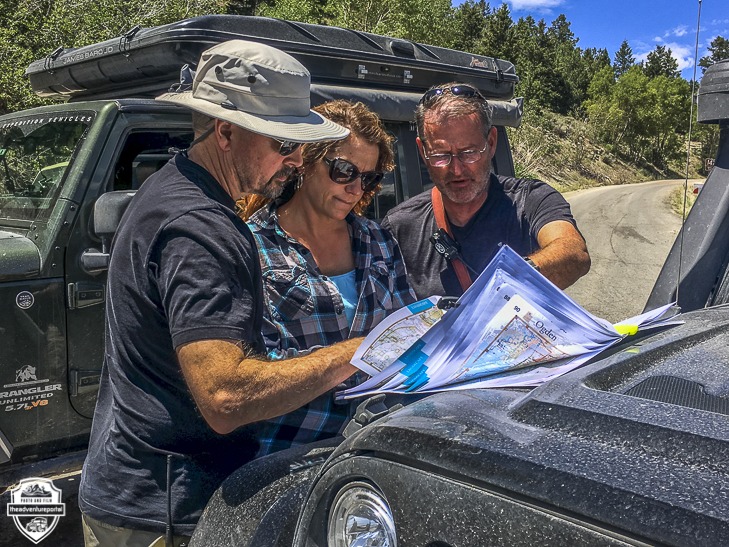
In terms of finding other likeminded off roaders, look for events that are open to the public. Stop by and introduce yourself. You are likely to meet lots of other folks willing to hit the trails with you.
6. Breaking a bead:
Also called losing a bead, this is common. This concern is warranted but easily mitigated. Four wheelers air down nearly every time they go off road. If you turn too sharp, too fast in soft stuff or against a rock, the deflated tire is likely to lose its bead. The issue sounds worse than it is, though. As you’ll learn in this article, Tire Problems Shouldn’t Deflate Your Day, the problem is easily corrected with an air compressor and jack.
7. Embarrassing yourself in front of others:
Understand that everyone has to start sometime. Heck, I can recall some of my boneheaded newbie mistakes. The hope is that your fellow drivers are patient and understanding. To build your confidence, take some introductory classes. Everyone in these classes are in the same position as you, and you’ll learn together. (I offer a number of beginners’ classes.) Bear in mind that making mistakes is a part of your training. Don’t get worked up if, for example, you pick the wrong line. You’ll quickly recover, and you’ll be a smarter four wheeler as a result.
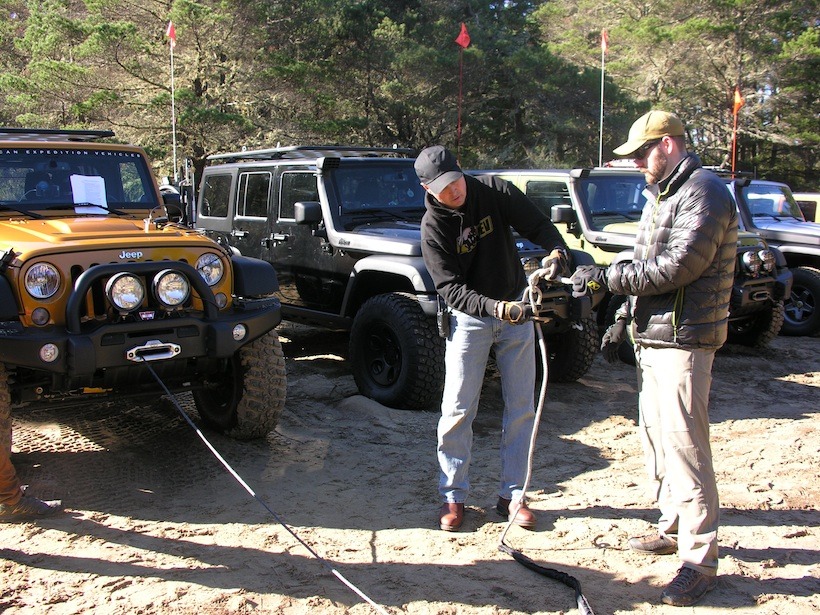
8. Lack of skill & knowledge:
There is no need to jump into driving on high risk, difficult trails. One trail book I have for Southern California lists over 150 trails (representing about 1500 miles). Only 19 of them rate above a difficulty Level of 4 (out of 10), although you do need 4-wheel drive and good clearance. Most of the trails take you to scenic overlooks, old ghost towns, old mines, and great camp sites. There are so many things to see and places to go on moderate to easy trails. An off-road training clinic will quickly eliminate any doubts about your ability to drive this level of trails safely. There are so many trails, and such a wide variety of terrain, that you’ll easily find a path that is enjoyable and surmountable.
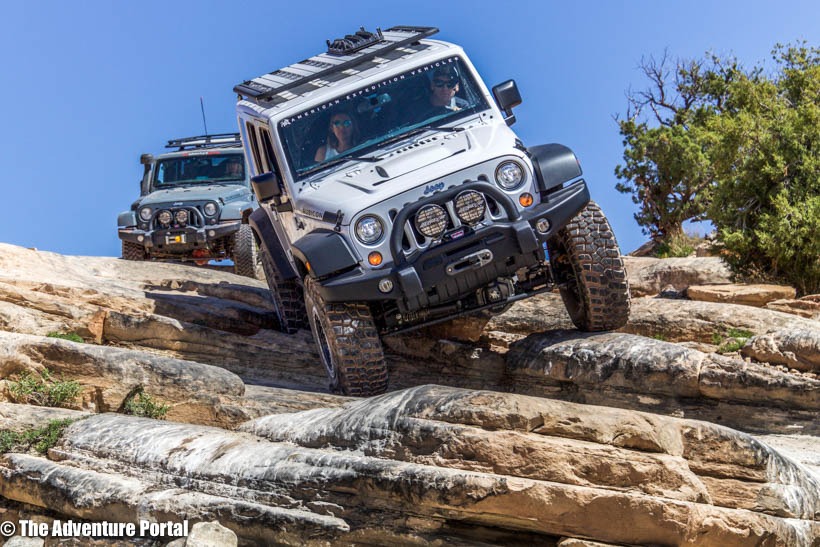
9. Going off camber:
This is the official term for driving when tipped at an angle. As a newbie, being tilted over can be an unnerving experience. Even veteran drivers are uncomfortable driving off camber. Off camber isn’t a real issue until you get up to around a 30-degree pitch. In most cases though, you’re not likely to tip over, unless you’re traveling fast. Go slow and control the bounce. In my Getting Started Off-Road Driving & Safety Clinic I put students through a 30-degree pitch exercise. They learn what it feels like and how to respond. That way they are less likely to freeze up while off road. You can also buy a couple of tools that will help you determine your angle. One is an angle finder carpenter’s use, available in any hardware store. Another one, you can find at 4WD stores can be glued to the dash, it shows pitch and yaw.
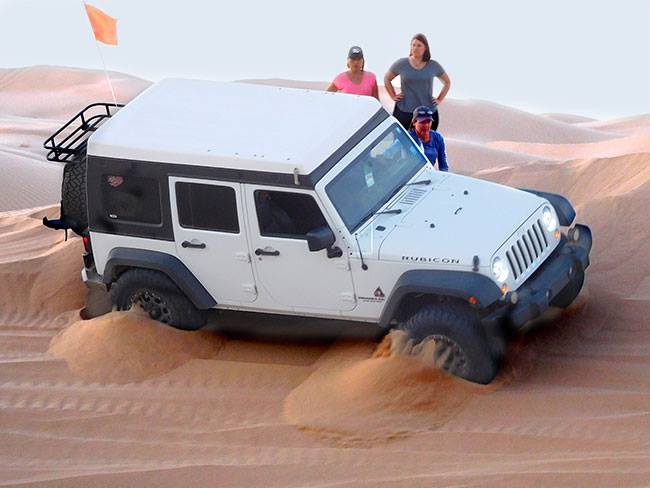
10. Lack of immediate emergency services:.
Some 4WD areas as so remote, you’re outside the 2-hour window that normally defines urgent care response. Worse, you may be outside of cell range, as well. Here are a few things you can do to help keep you safe when dealing with an emergency in a remote location:
-Get basic first aid training. Learn how to stabilize an injured person. Take a basic survival course, too. You may need to camp out one or more nights while waiting for help.
-Pack alternate forms of communication. These can include ham radio (requires a license), a satellite phone and a personal locator beacon or SPOT device.
-Always ride with at least one other vehicle. I can’t stress that enough. Especially while still inexperienced, don’t consider driving alone on anything but the easiest trails.
I hope you have a better understanding of how to address four wheeling issues. The trails await you. Get the training you need, pack your vehicle, and then get out and enjoy the ride.
Author: Tom Severin
Tom Severin is an International 4-Wheel Drive Trainers Association© certified professional 4WD Trainer and a Wilderness First Responder (WFR). He is an instructor for the United Four Wheel Drive Associations (UFWDA) and the California Association of 4WD Clubs.
For information and dates of his trainings and runs go to https://www.4x4training.com/w/top-10-fears-of-new-4wd-owners/
For extra peace of mind in the backcountry, check out this Sat Nav Buyers Guide HERE





